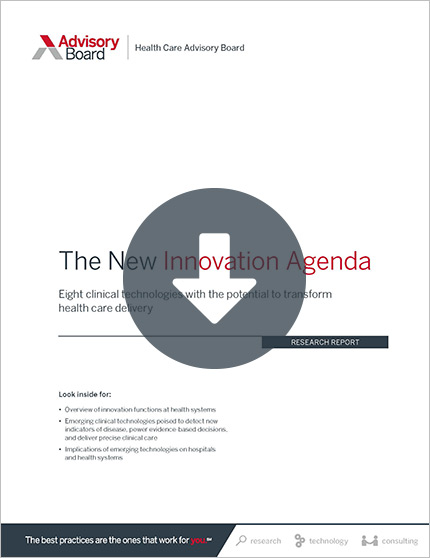Auto logout in seconds.
Continue LogoutScientists at Yale University on Wednesday published findings in Nature showing that they were able to restore cellular activity in the brains of slaughtered pigs 10 hours after they'd died, raising new ethical questions about the definition of brain death.
Get ready-to-present slides on the latest neurosciences market trends
Study details
While there's great debate over when a mammal should be considered brain dead, Vox reports that generally its agreed that brain cells begin to die off after about 15 minutes of being cut off from oxygen—and once those cells die it's nearly impossible to revive them.
However, Yale University researchers sought to test that conventional wisdom and see if a device they termed BrainEx—short for "ex vivo" or "out of the living"—could be used to revive brain cells in pigs after a prolonged death.
For the study, the researchers obtained 300 pig brains from a nearby slaughterhouse where the pigs were disembodied for food. After four hours, the researchers connected 32 of the pig brains to BrainEx, which pumped a synthetic blood delivering oxygen and nutrients into the pigs' brains via their arteries for six hours, at normal, non-cryogenic temperatures.
The synthetic blood included chemicals that prevent the oxidation of body tissue as well as apoptosis, the process of programmed cell death. In addition, the blood solution contained a neural activity blocker to ensure that neurons didn't become damaged, which would lead to cell death, and to prevent the chance the brain would regain any level of consciousness.
The researchers emphasized they were not trying to "reanimate" the brain. In fact, the researchers said that, had any level of consciousness been detected via EEG, the experiment would have been shut down.
To understand the specific effects of the perfusion solution, researchers also connected some pig brains to the machine without the solution and compared both sets to a third group of brains that were not connected to the machine.
Key findings
After six hours of being connected to BrainEx and receiving the perfusion solution—a total of 10 hours after the pigs were killed at the slaughterhouse—the researchers observed several signs that the brain cells had regained function. For instance, the cells metabolized oxygen and glucose, similar to living cells. Neurons fired information-carrying electrical bursts spontaneously, and when certain drugs designed to illicit a response were administered, blood vessels dilated.
Nenad Sestan, a neuroscientist at Yale who led the study, said the findings suggest that the brain cells' metabolism had been activated and the brain was "cellularly active." Sesten reiterated that the process did not bring the pig brain back to life. "This is not a living brain," he said. "This is a cellularly active brain."
Based on the findings, the researchers wrote that large mammal brains have "an underappreciated capacity for restoration of microcirculation and molecular and cellular activity after a prolonged post-mortem interval." More simply put, the researchers suggested that certain types of brain death might be neither permanent nor irreversible, STAT News reports.
Clinical implications
Andrea Beckel-Mitchener of the National Institute of Mental Health said the technology is "a real breakthrough for brain research," and that the restoration of cell function "has never been done before" in a large, mammalian brain after death. She added that the ability to keep these cells alive and working means scientists could study complex circuit connections "and functions that are lost when specimens are preserved in other ways."
Nita Farahany, who studies the ethics of emerging technologies at Duke Law School, described the study as "mind-blowing," and "groundbreaking," adding that it "fundamentally changes a lot of what the existing beliefs are in neuroscience about the irreversible loss of brain function once there is deprivation of oxygen to the brain."
James Bernat, a neurologist at Dartmouth College who was not involved in the research, similarly said the study "showed that, at least at the cellular and molecular level, things are not as irreversible [after brain death] as we thought."
Bernat speculated that with further study and development BrainEx could potentially lead to "neuroresuscitation," or reversing stroke or other brain injury-related damage.
Ethical questions arise
However, experts say the study findings raise ethical question for what constitutes brain death.
Kathleen Fenton, a bioethicist and pediatric heart surgeon in Maryland, said the study "makes it even less clear that the brain is actually dead under certain circumstances." He added, "It should inform the discussion surrounding brain death, [since it] shows that some cellular life and function loss that we have all thought was irreversible appears to not be irreversible."
Stuart Youngner and Insoo Hyun, both bioethicists, wrote in a commentary published in Nature that the study's findings could have implications for organ donation, arguing that if a brain can be kept alive after death, doctors may be more hesitant to harvest organs for donation. They wrote, "As the science of brain resuscitation progresses, some efforts to save or restore people's brains might seem increasingly reasonable—and some decisions to forego such attempts in favor of procuring organs for transplantation might seem less so."
When asked to comment, a spokesperson for the United Network for Organ Sharing, which manages organ donation in the United States, told STAT News, "This is way removed from organ donation."
Nonetheless, Youngner and Hyun wrote, "If technologies similar to BrainEx are improved and developed for use in humans, people who are declared brain dead (especially those with brain injuries resulting from a lack of oxygen) could become candidates for brain resuscitation rather than organ donation," Youngner and Hyun wrote. "Certainly, it could become harder for physicians or family members to be convinced that further medical intervention is futile" (Resnick, Vox, 4/17; Begley, STAT News, 4/17; Greenfieldboyce, "Shots," NPR, 4/17; Gorman, Reuters, 4/17; Kolata, New York Times, 4/17; Ritter, AP/Washington Post, 4/17; Achenbach, Washington Post, 4/17).
Get ready-to-present slides on the latest neurosciences market trends
Download the slides to learn everything you'll need to know about the neuroscience market in 2019, from growth outlook and financial considerations to new care management priorities and technology innovations.
Don't miss out on the latest Advisory Board insights
Create your free account to access 1 resource, including the latest research and webinars.
Want access without creating an account?
You have 1 free members-only resource remaining this month.
1 free members-only resources remaining
1 free members-only resources remaining
You've reached your limit of free insights
Become a member to access all of Advisory Board's resources, events, and experts
Never miss out on the latest innovative health care content tailored to you.
Benefits include:
You've reached your limit of free insights
Become a member to access all of Advisory Board's resources, events, and experts
Never miss out on the latest innovative health care content tailored to you.
Benefits include:
This content is available through your Curated Research partnership with Advisory Board. Click on ‘view this resource’ to read the full piece
Email ask@advisory.com to learn more
Click on ‘Become a Member’ to learn about the benefits of a Full-Access partnership with Advisory Board
Never miss out on the latest innovative health care content tailored to you.
Benefits Include:
This is for members only. Learn more.
Click on ‘Become a Member’ to learn about the benefits of a Full-Access partnership with Advisory Board
Never miss out on the latest innovative health care content tailored to you.


